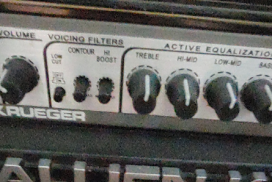Random Forests are an ensemble learning method widely used in artificial intelligence (AI) for classification and regression tasks. This technique builds upon the concept of decision trees, combining the predictions of multiple trees to enhance accuracy and robustness. By leveraging the strengths of individual decision trees while mitigating their weaknesses, Random Forests have become a Read More …
Tag: ai
Decision Trees in Artificial Intelligence
Decision trees are a popular and intuitive method used in artificial intelligence (AI) for classification and regression tasks. They represent a model in the form of a tree-like structure, where each internal node corresponds to a decision based on an input feature, each branch represents the outcome of that decision, and each leaf node signifies Read More …
SVM – Support Vector Machines
Support Vector Machines (SVMs) are a powerful supervised learning algorithm used in artificial intelligence (AI) for classification and regression tasks. Developed in the 1990s by Vladimir Vapnik and his colleagues, SVMs are particularly effective in high-dimensional spaces and are known for their robustness in handling both linear and non-linear data. How SVMs Work The primary Read More …
Linear Regression in Artificial Intelligence
Linear regression is a fundamental statistical method used in artificial intelligence (AI) and machine learning for modeling the relationship between a dependent variable and one or more independent variables. It is particularly useful for predictive analytics, where the goal is to forecast outcomes based on input data. At its core, linear regression aims to find the Read More …
Ted Gioia on AI’s Threat To Music
In this episode I’m joined by author, historian, and futurist Ted Gioia for another far reaching conversation that ranges from AI’s effect on culture to his thoughts on coffee.
Neural Networks: The Foundation of Deep Learning
The quest to replicate the remarkable learning capabilities of the human brain has long been a central theme in the field of Artificial Intelligence (AI). Neural networks, inspired by the structure and function of biological nervous systems, represent a significant step towards achieving this goal. Their evolution, culminating in the powerful techniques of deep learning, Read More …
GPU – Graphics Processing Units
Graphics Processing Units (GPUs) have become a cornerstone of modern computing, particularly in the field of artificial intelligence (AI). Originally designed to accelerate the rendering of images and graphics in video games and applications, GPUs have evolved into powerful parallel processors capable of handling the massive computational demands of AI workloads. This article explores the Read More …
GRU – Gated Recurrent Units
Gated Recurrent Units (GRUs) are a type of recurrent neural network (RNN) architecture designed to address some of the limitations of traditional RNNs, particularly in handling sequential data. Introduced by Kyunghyun Cho and his colleagues in 2014, GRUs have gained popularity in various applications within artificial intelligence (AI), especially in natural language processing, time series Read More …
Artificial Neural Networks
Imagine trying to teach a computer to recognize a cat in a picture. You could try to program specific rules – it has whiskers, pointy ears, a tail, etc. But what about a cat curled up in a ball? Or a blurry photo? Rule-based systems struggle with such variations. Artificial Neural Networks (ANNs) offer a Read More …
LSTM – Long Short-Term Memory
Long Short-Term Memory (LSTM) networks are a specialized type of recurrent neural network (RNN) designed to address the limitations of traditional RNNs in processing sequential data. LSTMs have become a cornerstone in the field of artificial intelligence (AI), particularly in applications involving time series prediction, natural language processing, and speech recognition. Understanding LSTMs and their Read More …


